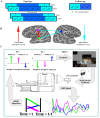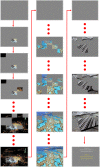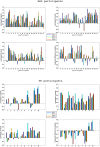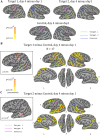Direct modulation of aberrant brain network connectivity through real-time NeuroFeedback
- PMID: 28917059
- PMCID: PMC5626477
- DOI: 10.7554/eLife.28974
Direct modulation of aberrant brain network connectivity through real-time NeuroFeedback
Abstract
The existence of abnormal connectivity patterns between resting state networks in neuropsychiatric disorders, including Autism Spectrum Disorder (ASD), has been well established. Traditional treatment methods in ASD are limited, and do not address the aberrant network structure. Using real-time fMRI neurofeedback, we directly trained three brain nodes in participants with ASD, in which the aberrant connectivity has been shown to correlate with symptom severity. Desired network connectivity patterns were reinforced in real-time, without participants' awareness of the training taking place. This training regimen produced large, significant long-term changes in correlations at the network level, and whole brain analysis revealed that the greatest changes were focused on the areas being trained. These changes were not found in the control group. Moreover, changes in ASD resting state connectivity following the training were correlated to changes in behavior, suggesting that neurofeedback can be used to directly alter complex, clinically relevant network connectivity patterns.
Keywords: ASD; human; neurofeedback; neuroscience; real-time fMRI.
Conflict of interest statement
No competing interests declared.
Figures













References
-
- Anderson JS, Nielsen JA, Froehlich AL, DuBray MB, Druzgal TJ, Cariello AN, Cooperrider JR, Zielinski BA, Ravichandran C, Fletcher PT, Alexander AL, Bigler ED, Lange N, Lainhart JE. Functional connectivity magnetic resonance imaging classification of autism. Brain. 2011;134:3742–3754. doi: 10.1093/brain/awr263. - DOI - PMC - PubMed
Publication types
MeSH terms
Grants and funding
LinkOut - more resources
Full Text Sources
Other Literature Sources
Medical

